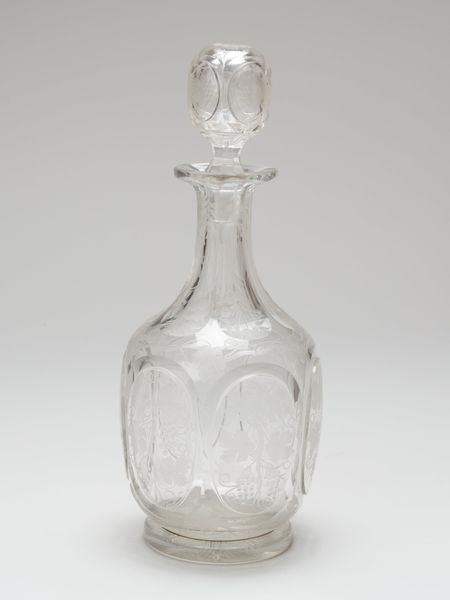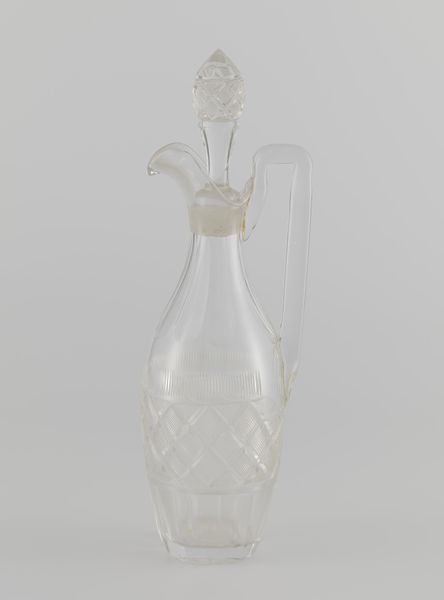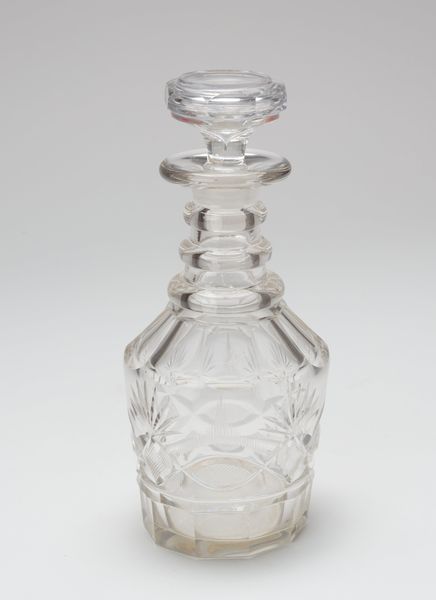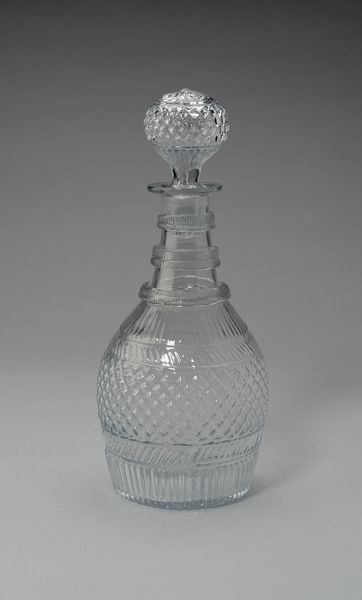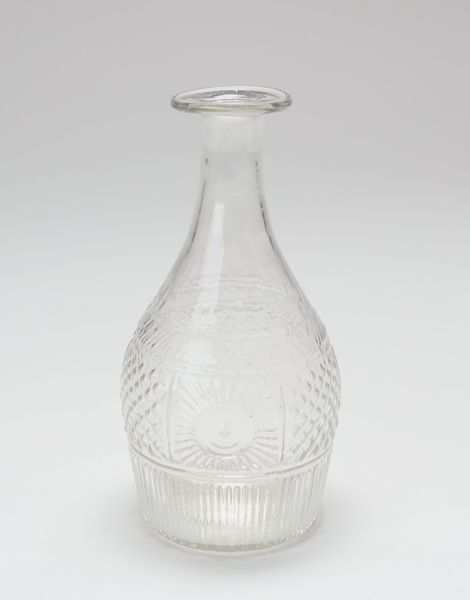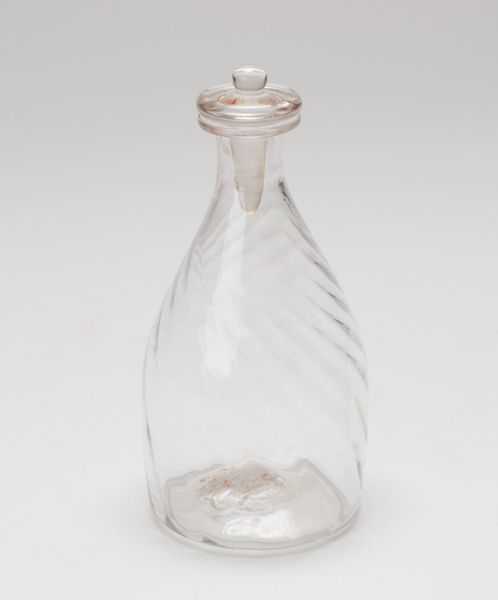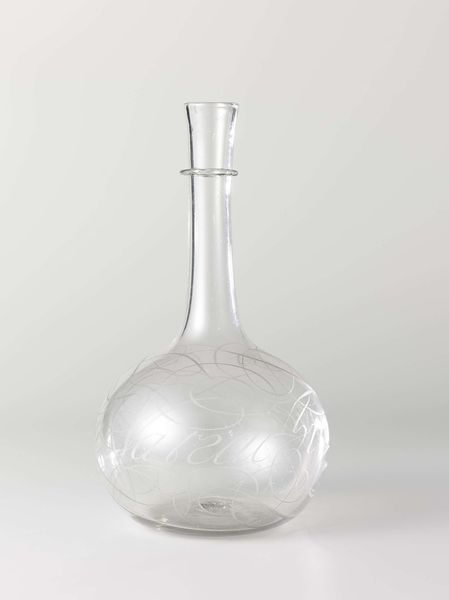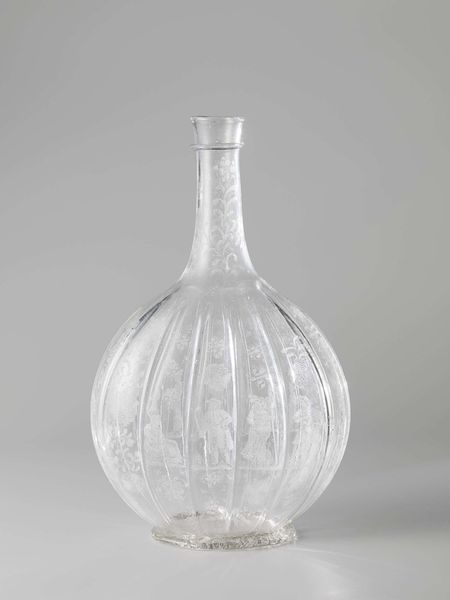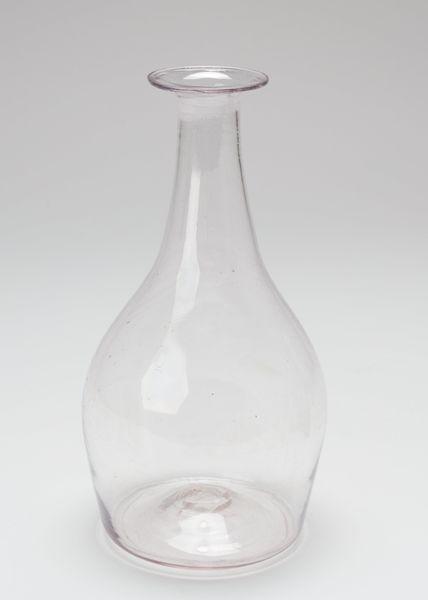
photography, glass
#
photography
#
glass
#
decorative-art
Dimensions: 6 x 2 5/8 x 2 5/8in. (15.2 x 6.7 x 6.7cm)
Copyright: Public Domain
Editor: Here we have an 18th or 19th-century decanter at the Minneapolis Institute of Art. It's made of clear glass and what strikes me is its simplicity; the vertical ribs create an understated elegance. What can you tell me about it? Curator: As a materialist, I'm drawn to understanding how such an object comes into being. We see 'decorative art', but I want to ask: What kind of labor produced it? The process of glassblowing in this period involved considerable skill, time, and specialized knowledge concentrated among glassworkers and often passed down generations within the confines of workshop production systems. Editor: So, looking at it, can we tell much about who made it, how the labor was divided? Curator: Yes, perhaps not the specific hands, but certainly something about the systems. The ribbing, likely created with a mold, suggests a move towards efficiency, perhaps catering to a growing consumer demand for standardized, decorative wares. It implies an intention beyond purely functional, venturing into the territory of aspiration and class distinction through ownership and display. Also the clarity of the glass indicates advanced processes. Did the cost of clear versus more bubbled or cloudy glass change over time, influencing the production strategies? Editor: That's fascinating. I hadn’t considered how this simple vessel embodies industrial and consumer shifts. Curator: Precisely. We can also look into which drinks were usually decanted using a vessel of this type, how it sat on a table surrounded by food of certain value or rarity. In what contexts and ways was this decanter employed? Ultimately this single material object serves as an intersection where labor meets status and consumption practices converge, providing a rich insight into society in the 18th and 19th centuries. Editor: Thank you. I'll definitely see these kinds of objects in a different way now, understanding the process of the production gives the object another story to tell.
Comments
No comments
Be the first to comment and join the conversation on the ultimate creative platform.


